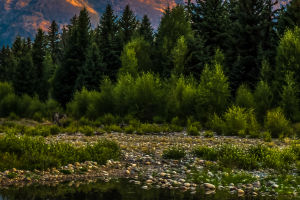In recent years, the topic of global warming has been a concern by the public, and the accelerated melting rate of snow-capped mountains has proved that global warming is coming into reality, such as Mount Muztag.
Situated at the convergence of Aktao County and Tashkurgan Tajik Autonomous County within the Xinjiang Uygur Autonomous Region of China, Muztag Peak towers at an impressive altitude of 7,509 meters (24,639 feet) above sea level, marking its prominence on the Pamir Plateau.
This magnificent mountain, known as "the father of icebergs" for its striking glaciers that resemble a silver beard, is witnessing the tangible effects of climate change. July, the warmest month in Xinjiang, brings about the melting of snow on Muztag Peak. Recent observations have highlighted a concerning trend: the area of exposed land following the July snowmelt has significantly increased compared to previous years, signaling an alarming acceleration in the mountain's snow loss
The meltwater from Muztag Peak, along with rainfall and groundwater, contributes to the formation of rivers that carve through the landscape. These rivers, observed from above, reveal a meandering path shaped by a variety of factors including topography, biological activity, and geological conditions. Initially, rivers may bend due to uneven terrain, disturbances caused by animals, or geological features like cracks and faults.
As rivers meander, the water's velocity varies, with the fastest flow in the center. When the river encounters a bend, the water's force erodes the concave bank and deposits sediment on the convex bank, leading to an increasingly pronounced curve. Over time, this process can lead to the river straightening out again, as the accumulation of sediment and erosion eventually isolates a bend, forming an oxbow lake, and the river finds a more direct route.
The transformation of Muztag Peak and its rivers serves as a microcosm for the broader impacts of global warming. The accelerated melting of glaciers not only reshapes the physical landscape but also poses significant challenges to the ecosystems and communities that depend on these water sources.
The changing course of rivers, driven by natural and now increasingly human-induced factors, underscores the urgent need for global environmental stewardship to mitigate the effects of climate change.


